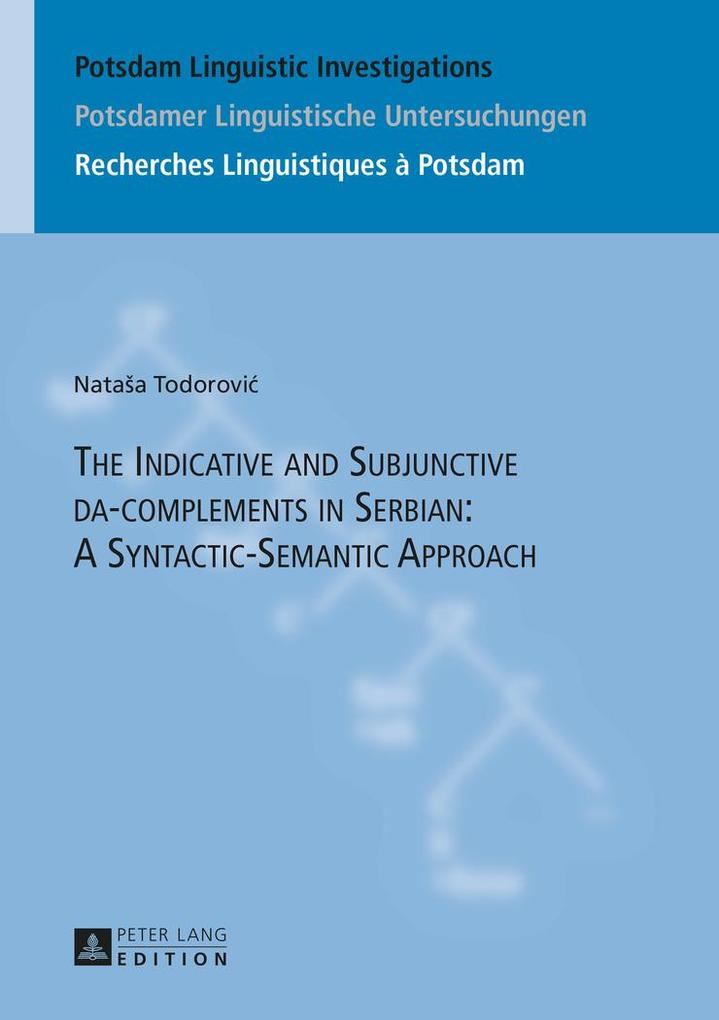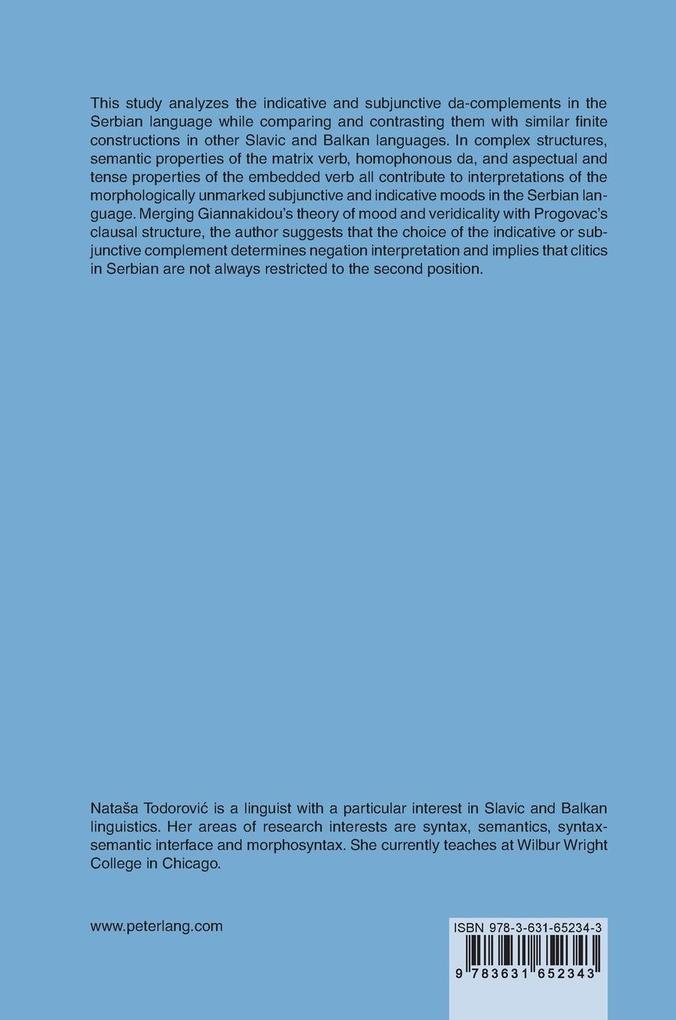
Zustellung: Mi, 30.07. - Sa, 02.08.
Versand in 7 Tagen
VersandkostenfreiBestellen & in Filiale abholen:
Subjunctive and indicative interpretations in Serbian are dependent on semantic properties of the matrix verb, the aspect and tense of the embedded verb, and the selection of homophonous da: the indicative or subjunctive da. The choice of mood affects clitic placement, negation interpretation, and licensing of negative polarity items.
This study analyzes the indicative and subjunctive da-complements in the Serbian language while comparing and contrasting them with similar finite constructions in other Slavic and Balkan languages. In complex structures, semantic properties of the matrix verb, homophonous da, and aspectual and tense properties of the embedded verb all contribute to interpretations of the morphologically unmarked subjunctive and indicative moods in the Serbian language. Merging Giannakidou's theory of mood and veridicality with Progovac's clausal structure, the author suggests that the choice of the indicative or subjunctive complement determines negation interpretation and implies that clitics in Serbian are not always restricted to the second position.
Inhaltsverzeichnis
Contents: Aspect Mood Tense Clitics Finite Complementation Infinitive Licensing of Negative Polarity Items Negation Balkan Sprachbund Clausal Structure Negative Polarity Items Second-position Cliticization Imperfective Aspect Perfective Aspect Indicative Mood Subjunctive Mood.
Produktdetails
Erscheinungsdatum
30. Juni 2015
Sprache
englisch
Auflage
1. Auflage
Seitenanzahl
144
Reihe
Potsdam Linguistic Investigations
Autor/Autorin
Nataša Todorovi, Nataa Todorovi
Herausgegeben von
Lilia Schürcks
Serie hrsg. von
Lilia Schürcks
Verlag/Hersteller
Produktart
gebunden
Gewicht
308 g
Größe (L/B/H)
216/153/12 mm
ISBN
9783631652343
Entdecken Sie mehr
Bewertungen
0 Bewertungen
Es wurden noch keine Bewertungen abgegeben. Schreiben Sie die erste Bewertung zu "The Indicative and Subjunctive da-complements in Serbian: A Syntactic-Semantic Approach" und helfen Sie damit anderen bei der Kaufentscheidung.










